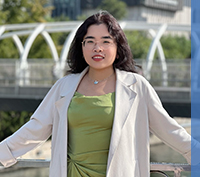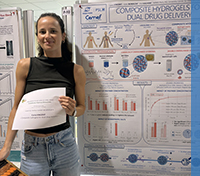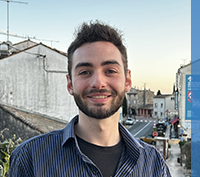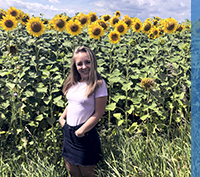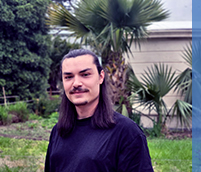PhD defence of Coraline Chartier
8 March 2023
Coraline Chartier defends her PhD in Computational Mechanics and Materials on March 17, 23.
Chitosan-based aerogels and cryogels for wound healing applications

Coraline Chartier conducted her PhD work in the BIO team under the supervision of Tania Budtova and Sytze Buwalda and with the Institute of Biomolecules Max Mousseron under the supervision of Benjamin Nottelet. She defends her PhD in "Computational Mechanics and Materials" on March 17th, 23 in front of the following jury:
– Audrey Tourette, CIRIMAT Université de Toulouse 3, reviewer
– Luc Picton, Laboratoire PBS Université de Rouen, reviewer
– Yves Grohens, IRDL, Université Bretagne Sud
– Carlos Alberto Garcia Gonzalez, Universidade de Santiago de Compostella
– Hélène Van den Berghe, Institute of Biomolecules Max Mousseron (IBMM)
Abstract:
The aging of the population is leading to health problems that are medical and economic challenges. One is chronic wounds which are those that remain in inflammatory stage, showing no sign of healing after 6 weeks, potentially associated with complications. To treat these wounds, dressings should be developed with improved properties, for example, based on advanced porous materials. A porous material allows gasses such as O2 and CO2 to go through, absorption of a large amount of exudate from the wound and, depending on the selected material, allows to heal the wound at the same time. In this regard, aerogels and cryogels are appealing materials because they present a high porosity (≥ 90%) which is open and interconnected. These materials are obtained by removing solvent from gels, either by drying with supercritical CO2 to preserve the structure and leading to “aerogels” or via freeze-drying to obtain a porous material with macropores and named “cryogels”. Both types of materials are proposed for wound dressing applications. During supercritical drying, the capillary pressure, that leads to the collapse of the gel pore walls, is theoretically zero, and the structure of the gel is kept intact. This is in contrast with freeze drying where the growth of ice crystals often damages gel morphology and leads to the formation of large pores with low specific surface area.
With the aim to develop a dressing to treat chronic wounds, aerogels and cryogels were prepared from chitosan, due to its unique features of having “active” role in wound healing. Chitosan has antimicrobial effects, it participates to the healing process through various mechanisms including enhanced hemostatis and easier remodeling during the inflammatory and proliferative phases, and it can be used as a carrier of various drugs for wound healing. Porous chitosan materials are already used in biomedical field as a hemostatic dressing in life threatening situations but were never employed for mid- or long-term treatment of wounds. Despite the interest in chitosan aerogels for biomedical applications, none is commercially available to our knowledge. The goal of this work was to define a range of targeted properties and then understand the correlation between the process and the final material structure and properties to develop a porous chitosan material suitable for wound healing. To this end, this manuscript first reports on the kinetics of coagulation of chitosan solutions, an important step of the process leading to a gel formation, and a model to predict the evolution of the mechanical properties during the coagulation from optical data is proposed. The influence of the process parameters on the morphology and properties of the dry porous materials are then detailed. Finally, optimized chitosan aerogels and cryogels are evaluated in vitro with respect to their ability to accommodate and release drugs with a focus on collagen production.
Keywords: Aerogel, cryogel, chitosan, porous materials, controlled drug release, wound dressings


